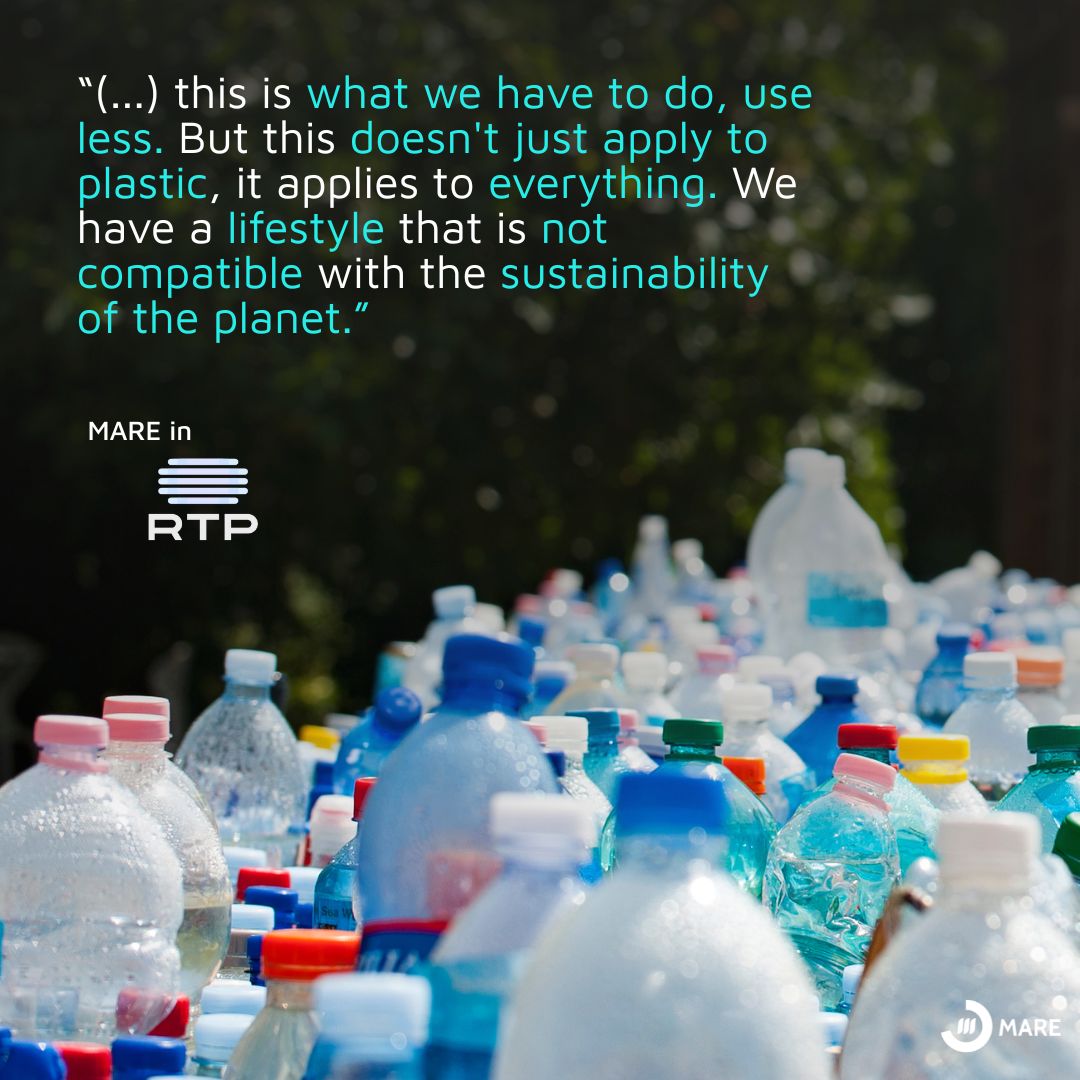Graça Martinho and Paula Sobral in the documentary “Where does recycling go?”
MARE researchers Graça Martinho and Paula Sobral participated in the RTP documentary “Where Does Recycling Go?”, an urgent call to action at a time when Portugal faces the challenge of meeting ambitious waste collection and recycling targets. 
The documentary, recently aired by RTP, explores the major challenges associated with managing three of the main types of household waste: packaging, batteries, and used electrical equipment. With testimonials from experts, authorities, and environmental organizations, the film illustrates the journey of waste when it is properly disposed of.
Graça Martinho, an expert in urban waste, highlights the environmental and economic risks of keeping electrical equipment at home or disposing of it incorrectly. “Keep it at home or throw it in the unsorted waste bin? Neither solution is the most appropriate or correct,” she says. According to the researcher, this equipment contains valuable materials—such as plastics, common metals, and rare metals—which, if not recycled, remain “trapped” and do not return to the circular economy. “Putting it in the unsorted waste usually ends up in a landfill and stays there forever,” she warns.
Regarding batteries, Graça Martinho revealed data from a study showing that each Portuguese family keeps an average of around 80 batteries at home—many of them used, accumulated in boxes, waiting for a destination. The problem, she stresses, is that batteries contain toxic substances. “They may contain mercury, lead, and metals that are hazardous to health, with consequences for our kidneys, liver, and central nervous system. If we abandon them, dangerous chemicals are released and contaminate the environment. And if the environment is contaminated, it will put our health at risk.”
Another focus of concern is the fluorinated gases present in refrigerators, which, although they do not harm the ozone layer, “have a high global warming potential, being up to 2300 times more dangerous than CO₂,” says Graça Martinho. The problem is exacerbated when this equipment is vandalized on the street for copper extraction, releasing the gases directly into the atmosphere.
Paula Sobral, a specialist in marine pollution, addressed the problem of plastic packaging, whose presence in the environment is increasingly persistent. "The main problem is that these materials do not degrade in the environment and therefore remain there forever. It is estimated that virtually all the plastic that has been produced to date still exists. It exists in smaller sizes, degraded, having already become brittle and produced increasingly smaller particles, but in fact, to completely degrade and disappear, it is estimated that this will not happen.", declared.
Paula Sobral emphasizes that the problem goes beyond individual action and requires a joint effort. “The blame for the problem cannot lie solely with the consumer. This is a problem that cuts across many sectors of society. Of course, the consumer is to blame, but the industry also needs to rethink its processes, contain its raw materials, and design more recyclable packaging.”
In addition, the researcher warns against the excessive consumption of plastics and other materials: “We recycle very little, that is the main message. We need to recycle much more and eliminate some plastics that are not necessary. There is a lot of unnecessary packaging, packaging within packaging within packaging. There is still a lot to be done in terms of using less plastic, because that is what we have to do: use less. But this is not just about plastic—it is about everything. We have a lifestyle that is not compatible with the sustainability of the planet."
“Where Does Recycling Go?” is more than a documentary, it is a collective wake-up call. The way each citizen manages their waste may seem like a small decision, but it has far-reaching consequences for public health, the environment, and the future of the planet.
Text by Patrícia Carvalho
